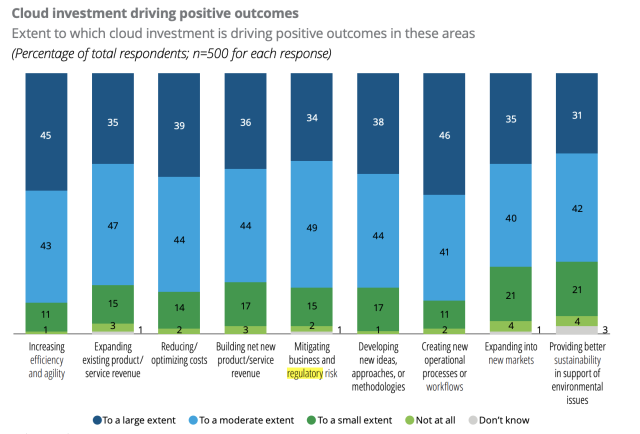Rethinking cloud repatriation: Unveiling the hidden costs and risks
In today's volatile and ever-changing technology landscape, the concept of cloud repatriation has gained media attention as companies consider shifting from cloud infrastructure back to fully self-managed on-premises solutions. While enticed by the promise of cost savings, organizations must carefully examine the long-term implications beyond immediate financial gains. Instead, embracing a strategic approach to cloud adoption and leveraging the advantages of hybrid IT may be the more sensible approach.

After a decade of migrating applications and data to the cloud, some companies are now contemplating a reverse migration. Before making such a critical decision, it is crucial to assess whether cloud repatriation genuinely aligns with your business objectives. In this blog, we explore the factors to consider, potential pitfalls, and why a strategic approach to cloud adoption is essential for maximizing the benefits offered by cloud computing.
One of the primary reasons the cloud has gained popularity is its unmatched flexibility and scalability. Businesses can scale rapidly based on demand, enabling them to seize opportunities and adapt to market changes. Cloud services have been instrumental in fueling innovation, driving digital transformation, and supporting remote work, especially in the wake of the COVID-19 pandemic.
Benefits of leveraging the cloud
Companies that successfully leverage the cloud know that investing in cloud platforms and services can deliver benefits beyond just efficiency and agility. According to Deloitte’s recently released U.S. Future of Cloud Survey Report, the vast majority of surveyed U.S. cloud decision-makers agree that integrated cloud technologies can act as a "force multiplier" for their digital strategies, driving positive outcomes in mitigating business and regulatory risk (83%), generating new product and service revenue (80%), expanding into new markets (74%), and supporting environmental sustainability (72%).
Successful organizations understand that investing in cloud platforms and services opens the door to a range of advantages, including:
- Cost optimization: Cloud services offer scalable infrastructure, allowing companies to pay for resources on demand, eliminating the need for upfront capital investments in hardware.
- Innovation acceleration: With easy access to cutting-edge technologies like AI, machine learning, and analytics, companies can rapidly develop and deploy innovative solutions.
- Global reach and scalability: Cloud services enable companies to reach a global audience effortlessly. Scalability ensures that businesses can seamlessly expand or shrink their operations based on demand without worrying about physical limitations.
- Enhanced security measures: Leading cloud providers invest heavily in security infrastructure by which companies can benefit from advanced threat detection and data protection measures.
- Improved collaboration and remote work: Cloud-based collaboration tools facilitate seamless communication and collaboration among teams, fostering productivity, crucial in the era of remote work.
Gartner, "Magic Quadrant for Cloud Infrastructure and Platform Services," and Forbes, "The Business Value of Cloud Computing."
Challenges of customer-owned on-premises solutions
Moving to an on-premises environment often requires purchasing and configuring necessary hardware, such as servers, storage systems, and networking equipment. This additional investment in physical infrastructure can be substantial, involving upfront costs and ongoing maintenance expenses. Not only do businesses have to bear the initial capital expenditure of purchasing the hardware, but they also need to consider the ongoing costs of maintaining and upgrading the equipment. This includes expenses related to power consumption, cooling systems, physical security measures, and skilled IT staff to manage and monitor the data center. These costs can add up significantly over time and may surpass the cost savings initially achieved through repatriation. It's important for organizations to carefully evaluate the long-term financial implications and compare them to the operational advantages of cloud solutions before deciding to move to an on-premises environment.
Furthermore, the trade-off between agility and on-premises solutions must be considered. Cloud-native solutions inherently offer flexibility and scalability, allowing businesses to adapt and scale quickly. Conversely, an on-premises environment may lack the same level of agility involving physical presence and potentially slower procurement and provisioning processes.
"We hear about repatriation a lot. The IT leaders of today are still trying to make sure that they've got the right combination of capabilities […] and that’s just going to get even more complicated with the next generation AI workloads."
—Jason Carolan, Chief Innovation Officer, FlexentialHear more from Jason in the on-demand webinar, “Data centers in the AI era: Emerging trends and strategies for 2024.”
Another crucial aspect is the increased burden on IT staff. Cloud repatriation shifts the responsibility of managing and maintaining on-premises systems to the IT team. This additional workload can potentially divert resources away from strategic initiatives like innovation, digital transformation, or other value-added projects that contribute to business growth.
While the recent cloud savings headlines are enticing, it's important to remember that the benefits of cloud repatriation depend on individual circumstances. Even Gartner says Cloud Repatriation Remains the Exception, Not the Rule, and does not anticipate substantial momentum for cloud repatriation due to the complexity of the process and the overall advantages of cloud solutions.
Considerations in heavily regulated industries
In heavily regulated industries such as finance and healthcare, companies face unique challenges when it comes to cloud repatriation decisions. Concerns surrounding data control and compliance have a significant impact on their choices. With stringent regulatory requirements, businesses may hesitate to trust third-party cloud providers fully. At Flexential, we understand the importance of striking a balance between maintaining control over sensitive data and leveraging the numerous benefits offered by reputable cloud vendors. Our expertise in navigating regulatory complexities allows us to provide tailored solutions that meet both compliance obligations and business objectives.
Cloud repatriation—Not one-size-fits-all
In conclusion, cloud repatriation should not be viewed as a one-size-fits-all solution. Businesses need to carefully evaluate their specific needs, long-term goals, and potential trade-offs before taking the leap. Cloud services have played a pivotal role in the growth and success of modern enterprises, and while cost savings are appealing, they should not overshadow the broader advantages that the cloud offers.
In reality, hybrid IT may provide the balance between short-term financial considerations and long-term strategic goals, empowering companies to navigate the complexities of modern IT environments successfully.
Hybrid IT offers optimized cost management by combining on-premises infrastructure with scalable cloud resources. It enables innovation through easy access to cutting-edge technologies, ensures scalability and global reach, enhances security with advanced threat detection, and fosters improved collaboration and remote work. This strategic approach empowers businesses to align their IT infrastructure to achieve flexibility, innovation, and security in a rapidly evolving digital landscape.
Ready to harness the power of a hybrid IT strategy and make informed cloud decisions? Discover how Flexential can help you navigate the complexities of modern IT environments and unlock the full potential of your technology infrastructure. Schedule a consultation with Flexential experts today.







